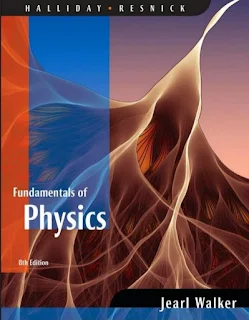 |
| Fundamentals of Physics by David Halliday, Jearl Walker & Robert Resnick |
DESCRIPTION:
"Fundamentals
of Physics" is a widely used and highly regarded physics textbook written
by David Halliday, Robert Resnick, and Jearl Walker. The book is known for its
clear and comprehensive coverage of classical physics principles. It has been a
standard textbook in many introductory physics courses at the college and
university levels.
Here
are some key features and topics covered in the book:
Classical
Mechanics: The book covers classical mechanics, including topics such
as kinematics, dynamics, work and energy, conservation laws, rotational motion,
and oscillations.
Kinematics:
The study of motion, including concepts like displacement, velocity, and
acceleration.
Dynamics:
The study of the forces and torques that cause motion.
Work
and Energy: The relationship between work done on an object and the resulting
changes in its energy.
Conservation
Laws: Principles stating that certain physical quantities (such as energy or
momentum) remain constant in an isolated system unless acted upon by external
forces.
Thermodynamics: The
principles of thermodynamics, heat transfer, and statistical mechanics are
discussed to provide a solid understanding of the laws governing thermal
systems.
Thermodynamics:
The study of the relationships between heat, work, temperature, and energy
transfer in physical systems.
Heat
Transfer: The study of how heat is transferred between systems, including
conduction, convection, and radiation.
Statistical
Mechanics: A branch of physics that uses statistical methods to explain the
behavior of a large number of particles in a system.
Electromagnetism: The
book delves into the fundamentals of electric and magnetic fields,
electromagnetic induction, Maxwell's equations, and electromagnetic waves.
Electric
and Magnetic Fields: Regions of space where electric charges and magnets exert
forces on each other.
Electromagnetic
Induction: The generation of an electromotive force across a conductor when it
is exposed to a varying magnetic field.
Maxwell's
Equations: A set of four fundamental equations that describe how electric and
magnetic fields interact.
Optics:
Topics related to optics, such as reflection, refraction, lenses, and wave
optics, are covered to introduce students to the behavior of light.
Reflection:
The bouncing back of light waves when they encounter a surface.
Refraction:
The bending of light waves as they pass from one medium to another with a
different optical density.
Lenses:
Transparent materials with curved surfaces that can converge or diverge light.
Modern
Physics: The latter part of the book introduces students to modern
physics, including topics like quantum mechanics, atomic physics, molecular
physics, nuclear physics, and particle physics.
Quantum
Mechanics: The branch of physics that deals with the behavior of very small
particles, often at the atomic and subatomic levels.
Atomic
Physics: The study of the structure and behavior of atoms.
Nuclear
Physics: The study of the properties and behavior of atomic nuclei.
Particle
Physics: The study of subatomic particles and their interactions.
Problem-Solving
Approach: The authors emphasize a problem-solving approach,
providing numerous examples and exercises to help students apply theoretical
concepts to practical situations.
The
emphasis on solving problems as a means of understanding and applying
theoretical concepts.
Illustrations
and Diagrams: The book is well-known for its clear and
illustrative diagrams, aiding in the visualization of physical concepts.
The
visual representations provided in the book to aid in understanding complex
physical concepts.
